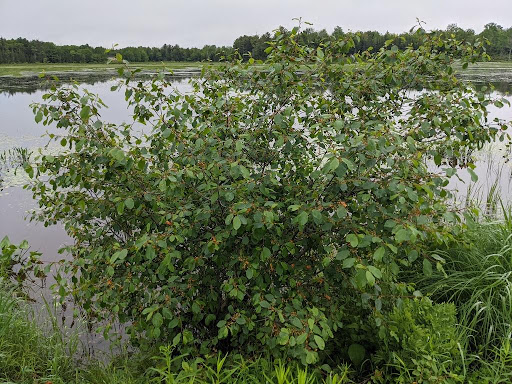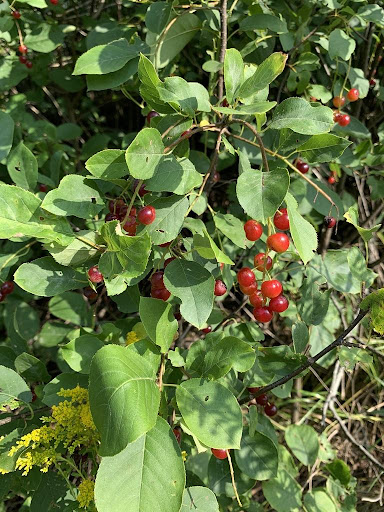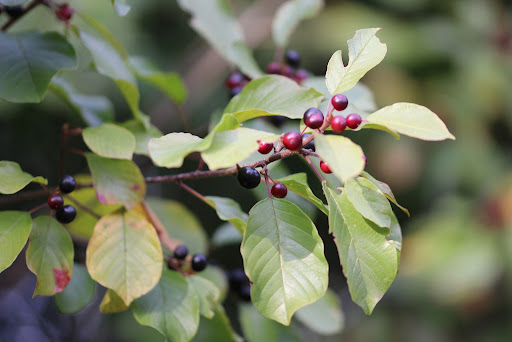Single or many stemmed shrub or small tree, reaching heights of 6 m. Leaves alternate along the stem, oval-shaped, 3 to 7 cm long and 2.5 to 4 cm wide, with smooth edges and a glossy upper surface. Flowers star-shaped, five-petaled, greenish-white, 3 to 5 mm wide, clustered in leaf axils and blooming from May to June. Produces 6 to 10 mm red berry-like fruits which turn black when ripe and are non-edible. Bark blackish-brown and spotted with grey. Inner bark is bright yellow.
Wet to moist old fields, thickets, forest, shores and open wetlands. Forms dense stands which can replace wetland and shoreline plant communities and take over forest understories, even eliminating tree seedlings. Tolerant of acidic conditions, this species is well adapted to invade a wide variety of natural habitats in Nova Scotia and may represent the greatest threat to plant communities in the province.
Introduced to North America in the late 1700s or early 1800s as a hedge or ornamental species and first noted as a serious invader of native habitats in the early 1900s. Sale of this species has mostly been phased out in North America, though a few cultivars remain on the market. The species has been present in Nova Scotia for at least half a century.

Chokecherry (Prunus virginiana) and Serviceberries (Amelanchier spp.) are native shrubs similar in appearance to Glossy Buckthorn. However, their berries make a wonderful jelly.
Glossy oval leaves with smooth edges, blackish-brown bark and spotted gray, inner bark yellow.



Although this plant’s berries are poisonous to many animals (including humans), they are commonly eaten by a variety of birds and some small mammals. Once they are consumed, the seeds can be spread over several kilometers, starting new infestations.
Promote the use of attractive, native and non-invasive shrubs. Encourage government, industry and your fellow citizens to do everything in their powers to prevent the trade and movement of Glossy Buckthorn. Uproot smaller plants, and repeatedly cut larger plants to slow down spread. Feed branches and foliage to livestock. Do not compost pulled and cut plant parts; instead, dry and burn on site (with permit). If you spot this invasive species, report the location to iNaturalist, or directly to the NSISC.
Join our mailing list.